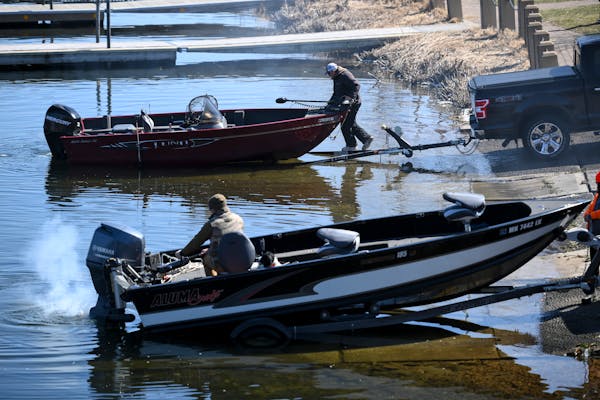Paddlers and others planning to venture into the Boundary Waters Canoe Area Wilderness will find the 2023 U.S. Forest Service permit playbook generally unchanged from a year ago.
Forest Service managers will keep the quota of wilderness permits the same as 2022, when it cut the number available by about 13% — from 285 per day to 248. At the time, the agency said it was responding to COVID-driven overcrowding and related damage to campsites and other areas. More than 100,000 visitors took overnight trips in 2021.
The sale of 2023 permits goes live at 9 a.m. Wednesday for the paddling season, which runs May 1 to Sept. 30 and is when the BWCA receives 94% of its visitors.
Most permit reductions last year, and carrying over to this year, are on the east side of the wilderness area.
Clare Shirley and her family run Sawbill Canoe Outfitters in Tofte, Minn., which regularly serves entry points such as Kawishiwi, Baker and Sawbill that saw daily reductions. She said their business last season took a hit. The quota at the Sawbill Lake entry point dropped from 14 permits per day to 11. Shirley said she wants to see data-driven reasoning behind agency decisions to alter the quota system.
The agency said last year it monitored traffic in specific areas before making the reduction. A Forest Service spokesperson said the agency still is analyzing 2022 data. "There is no further information that we have finalized that would lead us to make additional changes," said Joy VanDrie of the decision to keep the status quo.
Jason Zabokrtsky of Ely Outfitting Co. said he shares Shirley's frustration.
"[The Forest Service hasn't] been clear about how they are addressing quota allotments," he said. "They haven't shared with us any process or time frame."
Better vibe in 2023
Zabokrtsky said the mood in and around the BWCA is "dramatically different" for several reasons. Travelers are headed back to Quetico Provincial Park now that the U.S.-Canadian border is open, and, post-pandemic, people are traveling to other places — home and abroad — like they haven't in recent years. Plus, visitors who had trips short-circuited by fires that closed the BWCA in 2021 for the first time in decades were able to get their trips in last year.
"The tone we are sensing and hearing in the outfitter community is, everything looks a lot like it did pre-pandemic," he said.
Practical tools for a trip
The importance of planning ahead and having an idea of when, where and why you want to go can't be overstated when it comes to a BWCA trip. Here are helpful sources:
BWCA.com: As its keepers claim, it is a "virtual entry point" into all things wilderness travel, from trip guides to links to outfitters to excellent user forums on a range of topics.
Forest Service's trip guide: The basics, from entry points to Leave No Trace principles.
First-timers: The Star Tribune solicited tips from experienced travelers, some of whom offered bedrock advice, lighthearted as well as serious.
Recreation.gov: Where to search entry points and buy permits. Create an account before it's time to book.
By the numbers
166,374 Total visitors in 2021
100,089 Overnight visitors during May-September (quota season) in 2021
1,200 Miles of canoe routes in the BWCA
About 2,000 Designated campsites
Source: U.S. Forest Service/Department of Agriculture
Collin Morikawa part of 4-way tie for the lead at Hilton Head. Scottie Scheffler lurks 3 shots back
Nuggets forward Michael Porter Jr. heads into playoffs against Lakers after trying week for family
Jameson Taillon comes off the injured list and pitches Cubs to 8-3 win, dropping Marlins to 4-16

